Gallery opened June 2003
Updated: 6 Apr 2017
Ravine pic added




General LeRoy Stone's Centennial Monorail |
Gallery opened June 2003 |
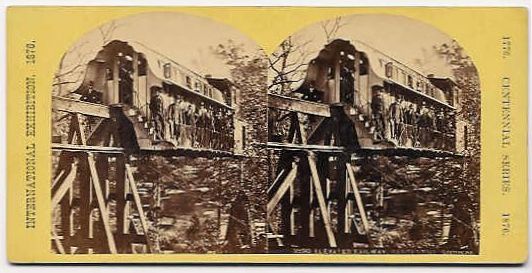 | Left: General LeRoy Stone's Centennial Monorail of 1876.
|
General LeRoy Stone's steam monorail first appeared at the Centennial Exposition marking the USA's 100th anniversary in 1876. An elevated track extending about 170 yards was built in Fairmont Park in Pennsylvania. It connected the Horticultural Hall with the Agricultural Hall, and appears to have been called "The Saddleback Railroad".
The elaborately decorated double-decker vehicle had two main wheels; the rear wheel was driven by a rotary steam engine of the La France type. By this date it must have been clear that rotary steam engines were inefficient, but this monorail was more of a fairground attraction than a demonstration of exemplary thermodynamics. The LaFrance Manufacturing Company of Elmira, NY had been in business for just three years, and the LaFrance brothers had met Stone's needs by adapting the rotary force-pump used for their steam fire engines.
This design clearly solves The Monorail Problem (ie how to avoid falling off the rail) by means of the guide rails visible at the level of the front steps. The square structure at the rear is the driver's cab, with a short funnel protruding, and smoke and steam visible.
Some drawings of this monorail locomotive have now been discovered, in Edward Knight's Mechanical Dictionary. (Supplementary Volume 1884) For some unknown reason Knight makes no reference to General Stone or the Centennial Exposition, but simply describes it as a "single rail railway", without naming the inventor. However, there can't have been that many rococo-style monorails running around America at the time, so I am pretty sure it is the same machine.
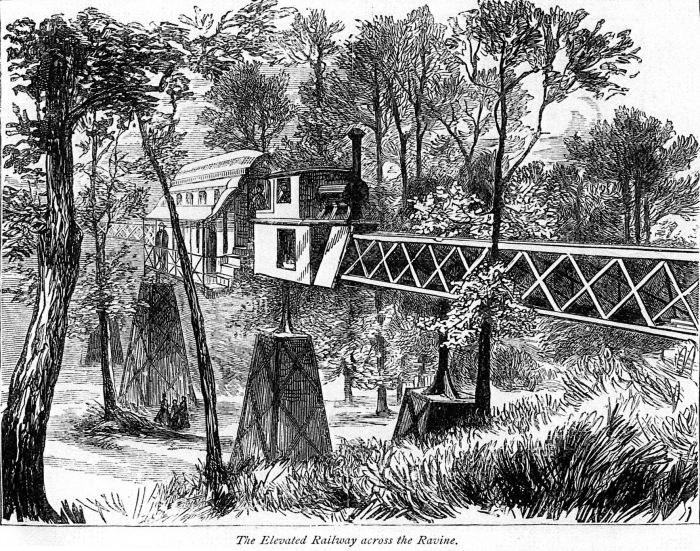 | Left: The Monorail crossing the ravine
|
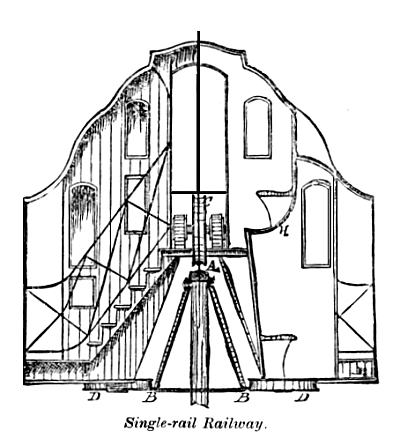 | Left: Knight's Monorail drawing.
|
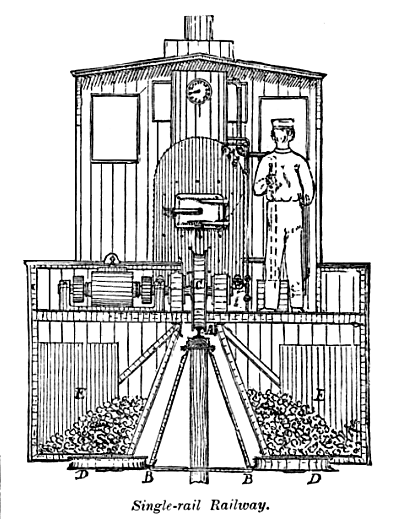 | Left: Knight's Monorail drawing
|
A modified version of LeRoy Stone’s design was used on a four-mile line between Bradford and Gilmore, Pennsylvania.
See The Bradford Monorail.
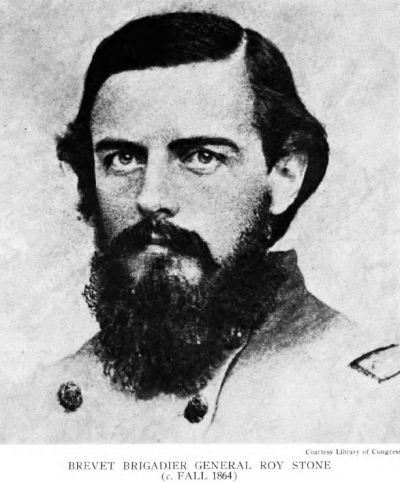 | Left: Portrait of Roy Stone: 1864
|

   
|